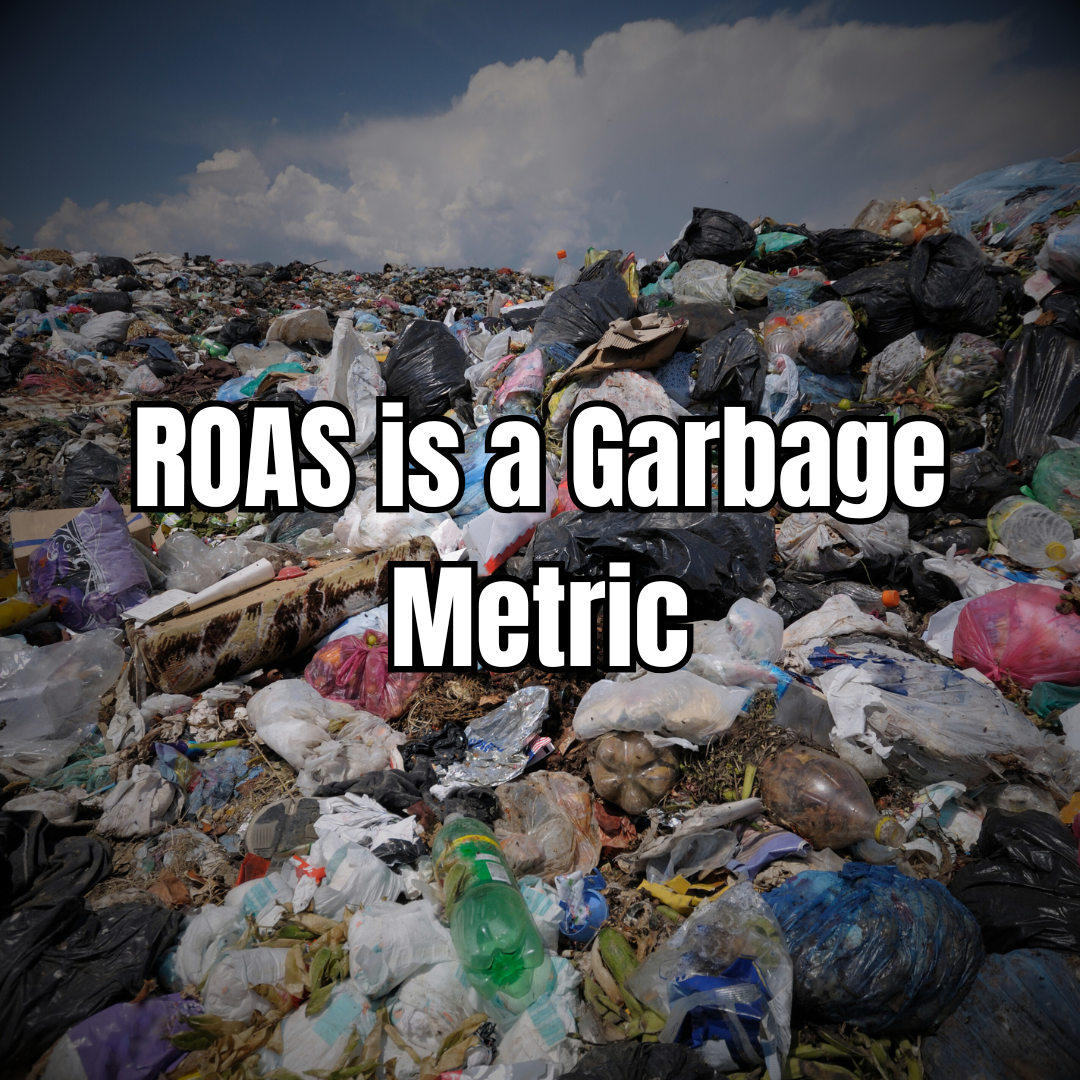ROAS is a Garbage Metric

Why chasing return on ad spend might be killing your business
The Danger of Focusing Only on ROAS
If you've ever worked with a marketing agency, you've likely heard about ROAS or Return On Ad Spend. It's often presented as a key indicator of how well your advertising is performing. Agencies love to showcase high ROAS figures in their reports, and it can look very impressive at first glance. However, focusing solely on ROAS can be a dangerous trap for business owners.
ROAS Doesn't Show the Full Profit Picture
ROAS simply tells you how much revenue you've generated for every dollar spent on ads. For example, a ROAS of 5x means you made $5 in sales for every $1 you spent on advertising. While this sounds great, ROAS doesn't take into account the other crucial costs involved in running your business.
Consider this: you spend $1,000 on ads and achieve $5,000 in sales (a 5x ROAS!). But what if you had to offer a massive discount, or your cost of goods was very high? You might end up with very little profit, or even a loss, despite the seemingly high ROAS.
Ignoring Profit Margins Can Hurt Your Business
Smart business decisions require understanding your profit margins. A high ROAS on low-margin products might generate a lot of revenue but contribute very little to your bottom line. Focusing solely on maximizing ROAS can lead you to prioritize sales volume over actual profitability.
It's essential to understand how your advertising spend impacts your overall business profitability, not just the initial revenue generated. For a deeper understanding of profit margins, you might find resources like this helpful: Investopedia's explanation of Gross Profit Margin.
Moving Beyond ROAS: What to Focus On Instead
Instead of solely chasing a high ROAS, business owners should focus on metrics that provide a clearer picture of profitability and sustainable growth.
Understanding Customer Acquisition Cost (CAC)
Knowing how much it actually costs you to acquire a new customer through your advertising efforts is crucial. This metric, often referred to as Customer Acquisition Cost (CAC), takes your total advertising spend and divides it by the number of new customers acquired.
A high ROAS might seem good, but if your CAC is also very high, you might not be acquiring customers efficiently. Understanding your CAC in relation to the lifetime value of a customer is a much more insightful approach. You can learn more about calculating CAC from resources like HubSpot's guide to Customer Acquisition Cost.
The Importance of Profitability Per Acquisition
Ultimately, the most important metric is the profitability of each customer you acquire through your advertising. This involves subtracting your CAC and the cost of goods sold from the revenue generated by that customer (at least on their first purchase).
A high ROAS doesn't guarantee profitability per acquisition. Focusing on this metric ensures that your marketing efforts are actually contributing to your bottom line and sustainable growth. For insights on aligning marketing with profitability, consider exploring articles on Marketing Week's perspective on profitability as a key marketing metric.
Don't Be Misled by Just One Metric
While ROAS can provide a snapshot of advertising revenue, it's crucial for business owners to look beyond this single metric. Understand your profit margins, track your Customer Acquisition Cost, and ultimately focus on the profitability of your customer acquisition efforts.
By doing so, you can make informed decisions that lead to sustainable growth and a healthy bottom line, rather than being misled by a potentially deceptive ROAS figure.


